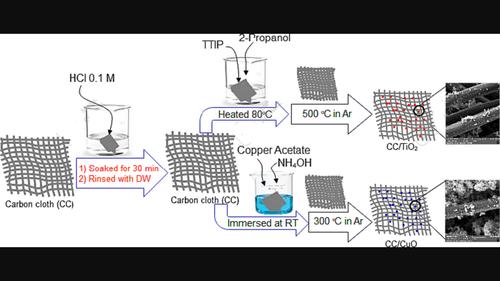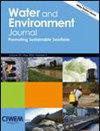提高微生物燃料电池性能:碳布/TiO2和碳布/CuO电极的研究
IF 1.8
4区 环境科学与生态学
Q4 ENVIRONMENTAL SCIENCES
引用次数: 0
摘要
本研究证实了改性电极微生物燃料电池(MFCs)在去除化学需氧量(COD)和利用工业肉类加工废水发电方面的有效性。线性扫描伏安法(LSV)和循环伏安法(CV)的研究结果表明,在碳布(CC)上添加CuO颗粒可以显著降低电荷传递电阻,从而提高其电化学性能。在批量实验中,采用不同电极,以Nafion-117作为质子交换膜(PEM)制备mfc。通过x射线粉末衍射(XRD)、能量色散x射线分析(EDAX)和扫描电镜(SEM)分析研究了电极表面金属氧化物的发展。极化曲线数据表明,使用CC/CuO电极的MFC在峰值输出功率为82.56 mW/m2、最大电流密度为213.33 mA/m2时,COD去除率最高(74.6%)。根据这些发现,在CC阳极上涂覆CuO可以促进电子转移,提高电极的导电性并增加其电化学表面积。总之,本研究的结果对可持续电力生产和对环境质量的显著影响具有重要意义,突出了研究方法和产出在应对全球能源和环境挑战方面的战略重要性。本文章由计算机程序翻译,如有差异,请以英文原文为准。

Enhancing microbial fuel cell performance: A study on carbon cloth/TiO2 and carbon cloth/CuO electrodes
This study confirmed the efficacy of modified electrode microbial fuel cells (MFCs) in removing chemical oxygen demand (COD) and generating electricity using wastewater from industrial meat processing. The findings of linear sweep voltammetry (LSV) and cyclic voltammetry (CV) demonstrated that applying CuO particles to carbon cloth (CC) significantly reduced the charge transfer resistance, resulting in improved electrochemical performance. In the batch experiment, the MFCs were conducted by applying different electrodes and Nafion-117 as a proton exchange membrane (PEM). X-ray powder diffraction (XRD), energy-dispersive X-ray analysis (EDAX) and scanning electron microscope (SEM) analyses were performed to study the development of metal oxide on the electrode surface. The MFC operating with the CC/CuO electrode achieved a maximum COD removal (74.6%), which was attained at the peak power output of 82.56 mW/m2 and the greatest current density of 213.33 mA/m2, as indicated by the polarization curve data. In light of these findings, coating CuO on the CC anode promotes electron transfer, enhances the electrode's conductivity and increases its electrochemical surface area. In summary, the findings of this study hold significant implications for sustainable electricity production and remarkable effects on environmental quality, highlighting the strategic importance of the research approach and outputs in addressing global energy and environmental challenges.
求助全文
通过发布文献求助,成功后即可免费获取论文全文。
去求助
来源期刊

Water and Environment Journal
环境科学-湖沼学
CiteScore
4.80
自引率
0.00%
发文量
67
审稿时长
18-36 weeks
期刊介绍:
Water and Environment Journal is an internationally recognised peer reviewed Journal for the dissemination of innovations and solutions focussed on enhancing water management best practice. Water and Environment Journal is available to over 12,000 institutions with a further 7,000 copies physically distributed to the Chartered Institution of Water and Environmental Management (CIWEM) membership, comprised of environment sector professionals based across the value chain (utilities, consultancy, technology suppliers, regulators, government and NGOs). As such, the journal provides a conduit between academics and practitioners. We therefore particularly encourage contributions focussed at the interface between academia and industry, which deliver industrially impactful applied research underpinned by scientific evidence. We are keen to attract papers on a broad range of subjects including:
-Water and wastewater treatment for agricultural, municipal and industrial applications
-Sludge treatment including processing, storage and management
-Water recycling
-Urban and stormwater management
-Integrated water management strategies
-Water infrastructure and distribution
-Climate change mitigation including management of impacts on agriculture, urban areas and infrastructure
 求助内容:
求助内容: 应助结果提醒方式:
应助结果提醒方式:


